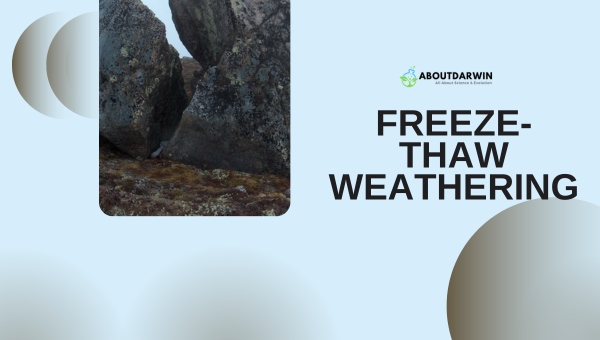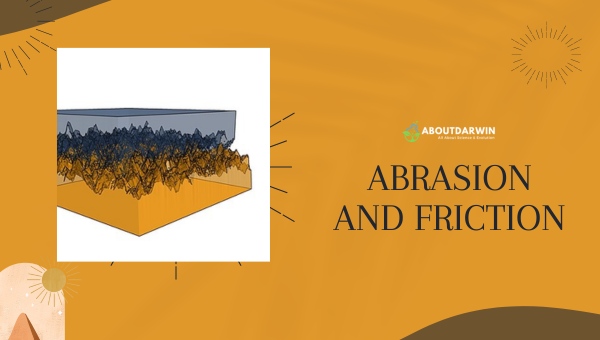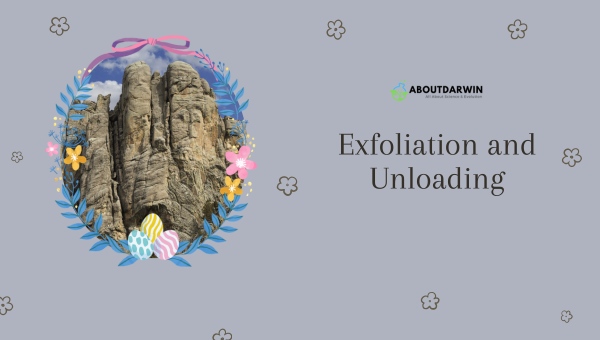Physical Address
304 North Cardinal St.
Dorchester Center, MA 02124
Mechanical weathering is a fascinating natural phenomenon that continuously reshapes our planet’s landscapes. Through five distinct processes—freeze-thaw weathering, abrasion, exfoliation, thermal expansion, and organic activity—rocks are systematically broken down into smaller fragments.
These processes not only contribute to the formation of unique geological features but also play a vital role in nutrient cycling within ecosystems.
How these forces interact with the environment? Let’s explore the intricate mechanics behind these weathering processes that create the world around us.
Contents
Ready to explore some fascinating rock-breaking phenomena? Let’s dive into these five mechanical weathering processes and understand their effects on our ever-changing Earth.
One fascinating process that contributes to the breakdown of rocks is freeze-thaw weathering. Also known as frost wedging or ice wedging, this mechanical weathering process significantly shapes Earth’s landscapes.
I’ll discuss the process, some common examples, and the resulting landforms that emerge from freeze-thaw weathering.

The science behind freeze-thaw weathering is pretty straightforward. It primarily involves water, fluctuating temperatures, and, of course, rocks. When temperatures drop below freezing, the water trapped inside rock cracks and crevices expands as it turns into ice.
This expansion generates pressure on surrounding rock, causing it to weaken and eventually fracture. When temperatures rise above freezing again, the ice melts, and the water seeps further into the rock, repeating the cycle.
This process frequently occurs in regions with significant temperature variations, such as high-elevation, mountainous areas, or places experiencing regular freeze-thaw cycles. Some examples of these environments include:
The effects of freeze-thaw weathering can be observed in various landforms and features, such as:
Multiple factors influence the rate of freeze-thaw weathering:
| Factor | Effect on Rate |
|---|---|
| Temperature fluctuations | More freeze-thaw cycles increase the rate of weathering |
| Rock type | Rocks with more cracks and pores are more susceptible to the process |
| Water availability | Greater water availability accelerates freeze-thaw weathering |
Freeze-thaw weathering is essential in breaking down rocks and shaping Earth’s landscapes. Through a combination of water, temperature fluctuations, and the characteristics of particular stones, this weathering process creates an array of unique landforms for us to marvel at and appreciate.
Mechanical weathering processes play a vital role in breaking down rocks. One such significant process is abrasion. It’s the physical wearing down of rocks by various forces, like the impact of other rock particles or the constant movement of ice or water.

Another similar process to consider is friction. When one rock rubs against another, it experiences wear and tear. Over time, this repeated abrasion and friction significantly contribute to the breakage of rocks.
Different factors come into play during abrasion, with two essential factors being the wind and water. I’ll discuss the effects of these factors on rock abrasion below:
Apart from wind and water, other natural forces also play a significant role in abrasion and friction:
Different rock types also play a role in the abrasion rate and friction. For example, softer rocks, like sandstone, tend to wear away more quickly than harder rocks, like granite.
An essential consequence of abrasion and friction is the creation of sediments. As rocks wear down, they produce smaller particles ranging from tiny clay particles to sand-sized debris.
These sediments can then be moved and deposited in different locations, such as riverbeds or deltas, and may eventually become compacted and cemented to form new sedimentary rocks.
Abrasion and friction are crucial mechanical weathering processes that contribute to the breakage and erosion of rocks. The impacts of wind, water, and other natural forces vary depending on conditions and rock types.
The significance of abrasion and friction lies in their ability to create sediments, essential components in the rock cycle.
Exfoliation and unloading are mechanical weathering processes that break down rocks through stress release and pressure changes. They play a significant role in shaping the Earth’s surface, and understanding them helps us appreciate the dynamic nature of our planet.

Exfoliation, also known as sheeting or flaking, occurs when the outer layers of a rock peel off due to pressure changes or thermal expansion. This can happen for several reasons:
On the other hand, unloading is mechanical weathering that occurs when rocks are exposed to the Earth’s surface after being buried for a long time. Some contributing factors include:
As the pressure on rocks is released, they expand and fracture, forming unique geological features. One example of the impact of unloading is the creation of exfoliation domes. These impressive structures are found in areas with large granite bodies, such as Yosemite National Park in the U.S.
| Examples of Exfoliation Domes | Location |
|---|---|
| Half Dome | Yosemite National Park, California. |
| Enchanted Rock | Texas Hill Country, Texas. |
Exfoliation and unloading are two mechanical weathering processes that break down rocks and shape the Earth’s landscape. By understanding these complex mechanisms, we can better appreciate the powerful forces continuously altering our planet’s surface.
Thermal expansion and contraction is the fourth mechanical weathering process discussed in this article. With this process, rocks break down due to temperature fluctuations that cause them to expand and contract.
The rocks’ minerals can expand when the temperature rises, increasing overall volume. On the other hand, when the temperature drops, the minerals contract, and the rock’s volume decreases.
There are two primary factors to consider when it comes to thermal expansion and contraction:
Here are some common examples of thermal expansion and contraction:
To better understand the impact of thermal expansion and contraction, consider these key points:
I hope this summary helps clarify the effects of thermal expansion and contraction on rocks and the crucial role of temperature fluctuations.
I can’t overlook the immense impact of organic activity and roots when considering the forces that break down rocks. As plants grow, their roots expand and delve into rock cracks and crevices.
Over time, this can cause substantial stress on the rock structure, leading to mechanical weathering. Let me explain a few ways in which organic activity contributes to the breakdown of rocks.
Firstly, the simple growth of plant roots applies a significant amount of force on rocks. As roots expand, they exert pressure on the surrounding rock, causing it to crack, split, and break apart. Even the smallest of plants can have a considerable impact on rock surfaces.
This process can be further intensified by the presence of large trees, where their roots can spread out extensively and accelerate the breakdown process.
Secondly, I’ve observed that the burrowing of animals plays a role in breaking down rocks. Animals such as rodents, insects, and earthworms can burrow through soil and loosened rock particles, creating tunnels and channels that weaken the overall rock structure.
Another contributing factor involves the chemical weathering that can occur alongside the mechanical weathering caused by organic activity.
For example, as plants and microbes decompose organic material, they produce acids that can dissolve minerals within rocks. This can lead to further breakdown and fragmentation of the rock structure.
Let’s summarize these points in a bullet point list for better comprehension:
It’s important to remember that these processes don’t operate in isolation. Instead, they often work together, synergistically breaking down rocks over time. It’s also worth noting that climate, temperature, and moisture levels can all influence the rate at which these processes occur.
By understanding the interplay between organic activity and roots, we can better appreciate the complexity of mechanical weathering and its role in shaping our landscapes.
Mechanical weathering is a fundamental process that continuously reshapes our planet’s landscape. By physically breaking down rocks into smaller fragments through mechanisms like freeze-thaw cycles, abrasion, and organic activity, it plays a vital role in soil formation and nutrient availability for ecosystems.
These processes contribute not only to the creation of unique geological features but also to the dynamic nature of Earth’s surface. Recognizing the significance of mechanical weathering enhances our appreciation of the natural world and its ever-changing beauty.